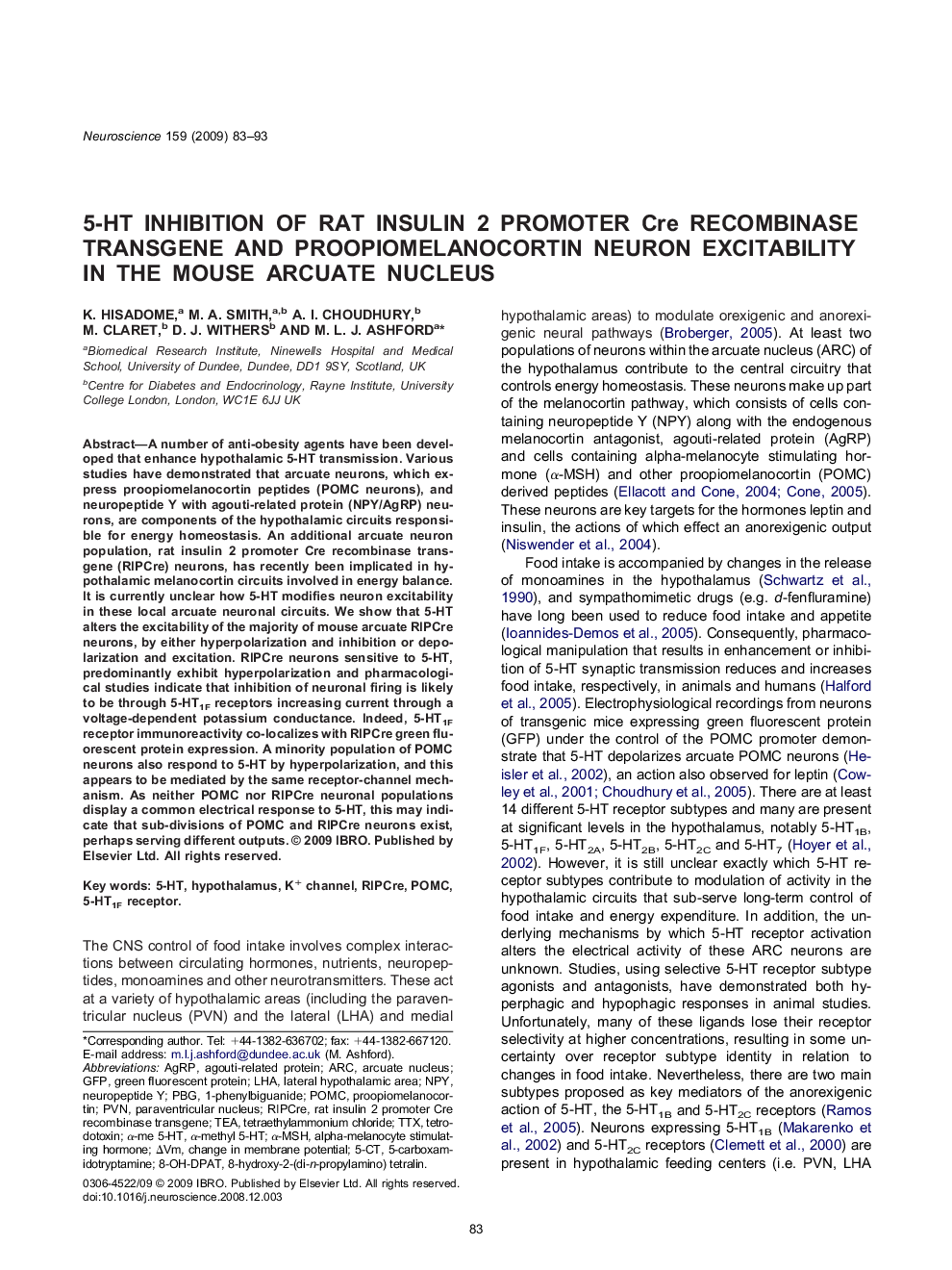| Article ID | Journal | Published Year | Pages | File Type |
|---|---|---|---|---|
| 6278357 | Neuroscience | 2009 | 11 Pages |
Abstract
A number of anti-obesity agents have been developed that enhance hypothalamic 5-HT transmission. Various studies have demonstrated that arcuate neurons, which express proopiomelanocortin peptides (POMC neurons), and neuropeptide Y with agouti-related protein (NPY/AgRP) neurons, are components of the hypothalamic circuits responsible for energy homeostasis. An additional arcuate neuron population, rat insulin 2 promoter Cre recombinase transgene (RIPCre) neurons, has recently been implicated in hypothalamic melanocortin circuits involved in energy balance. It is currently unclear how 5-HT modifies neuron excitability in these local arcuate neuronal circuits. We show that 5-HT alters the excitability of the majority of mouse arcuate RIPCre neurons, by either hyperpolarization and inhibition or depolarization and excitation. RIPCre neurons sensitive to 5-HT, predominantly exhibit hyperpolarization and pharmacological studies indicate that inhibition of neuronal firing is likely to be through 5-HT1F receptors increasing current through a voltage-dependent potassium conductance. Indeed, 5-HT1F receptor immunoreactivity co-localizes with RIPCre green fluorescent protein expression. A minority population of POMC neurons also respond to 5-HT by hyperpolarization, and this appears to be mediated by the same receptor-channel mechanism. As neither POMC nor RIPCre neuronal populations display a common electrical response to 5-HT, this may indicate that sub-divisions of POMC and RIPCre neurons exist, perhaps serving different outputs.
Keywords
POMCtetraethylammonium chlorideα-MSH5-HTLHA8-OH-DPATPBGTTXAgRPNPY5-carboxamidotryptamineGFP5-HT1F receptor5-CT8-hydroxy-2-(di-n-propylamino) tetralinK+ channeltetrodotoxinArcPVNlateral hypothalamic areaarcuate nucleusparaventricular nucleusalpha-melanocyte stimulating hormoneHypothalamusgreen fluorescent proteinAgouti-related proteinproopiomelanocortinTEANeuropeptide Y
Related Topics
Life Sciences
Neuroscience
Neuroscience (General)
Authors
K. Hisadome, M.A. Smith, A.I. Choudhury, M. Claret, D.J. Withers, M.L.J. Ashford,
